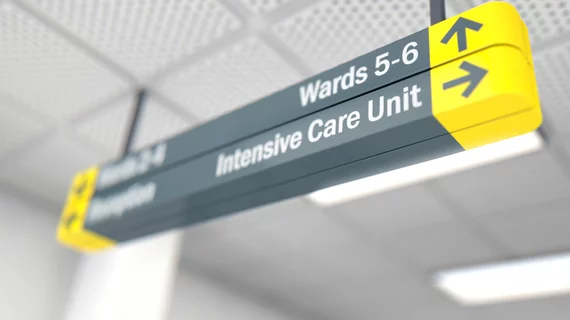Ventilator support predictable by integrated, AI-inclusive diagramming
Researchers in the U.S. and China have meshed AI with blood testing and CT lung imaging to accurately predict which newly diagnosed COVID-19 patients will need a mechanical ventilator.
The team trained and retrospectively cross-validated the model with data from 822 patients at Renmin Hospital of Wuhan University and 47 patients from University Hospitals in Cleveland. All patients were seen in 2020 during the first surge of the pandemic.
The model, called ClAIN for clinical and AI imaging nomogram, outperformed an AI predictor (AIP) using only the chest imaging as well as a clinical predictor using only the lab values (ACP).
The project is described in a study running in IEEE Journal of Biomedical and Health Informatics.
ClAIN’s predictive accuracy proved more than 10% better than ACP and 3% better than AIP, senior study author Anant Madabhushi, PhD, of Case Western Reserve University and colleagues.
The team also used the model to personalize risk assessments by constructing a nomogram—a comparative 2D diagram—which “showed benefit over using only the [AI] approach or the clinical factors.”
“Further multisite prospective validation would allow for clinical deployment of ClAIN specially to triage patients for ventilator usage in the face of worldwide shortages in availability of mechanical ventilators,” Madabhushi and co-authors write.
If it holds up to such prospective testing, they add, the tool “could provide an objective way to risk-stratify patients immediately following diagnosis with COVID-19.”
More:
Given current expert recommendations for early intubation and initiation of invasive mechanical ventilation to significantly reduce disease progression and decrease COVID-19 related mortality, there is an urgent need to build a validated prognostic approach using routine clinical tools to risk-assess patients who have tested positive for COVID-19 and are at a relatively early course of disease. This would not only allow for early initiation of medications or supportive interventions to decelerate disease progression for these patients, but in the face of worldwide ventilator shortage allow for early identification of ideal ventilator candidates—those at increased risk of developing severe acute respiratory distress syndrome or death.”
The study’s lead author is Amogh Hiremath, a PhD student in Madabhushi’s lab.
The development is covered by Case Western Reserve’s internal news division, and the study is available in full for free (click PDF).

